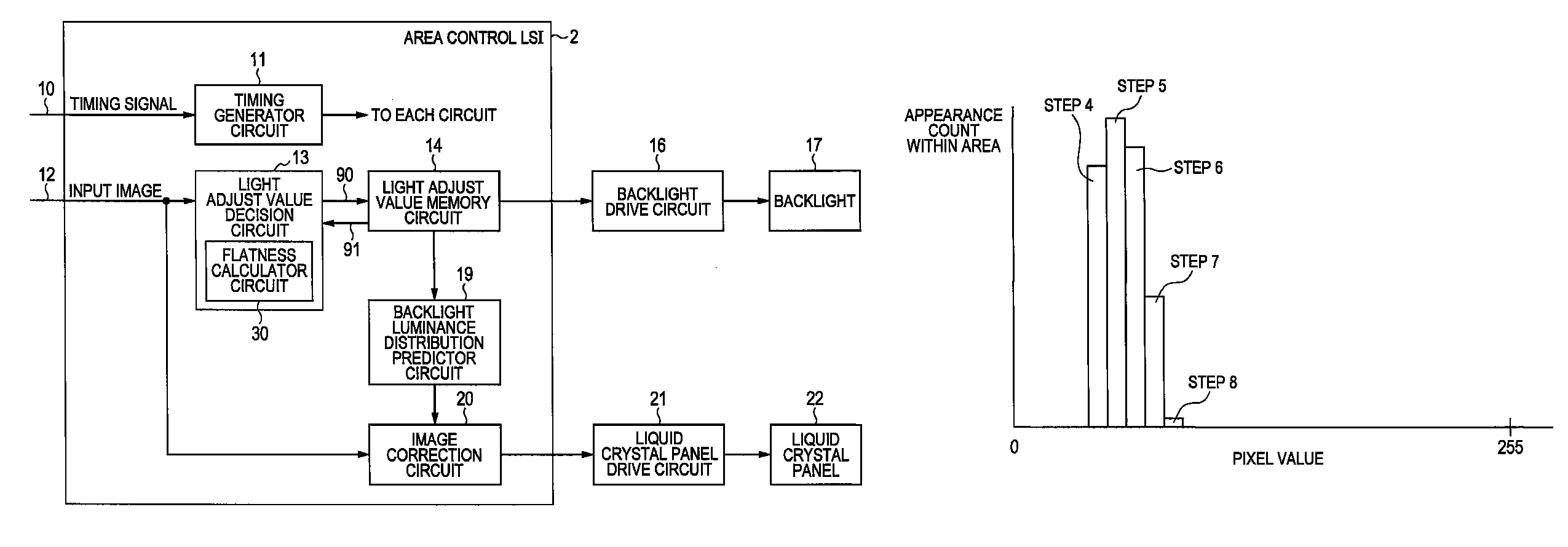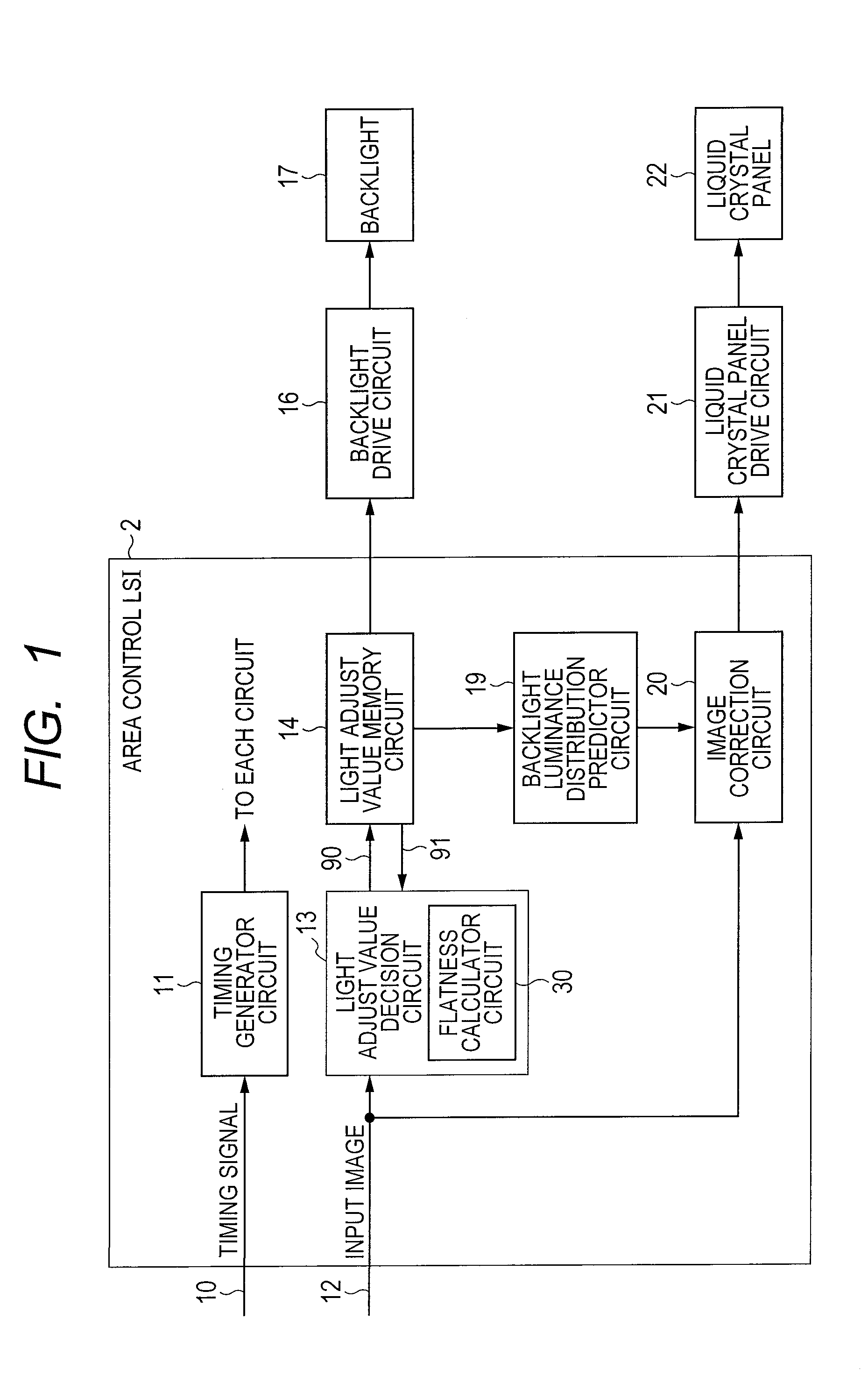Display apparatus and control circuit of the same
a display apparatus and control circuit technology, applied in the field of image display devices, can solve the problems of unavoidable fluctuations in gamma characteristic, large electrical power consumption of backlighting, and rise of entire backlight luminance, so as to reduce power consumption, reduce uneven or irregular sections, and high light source luminance
- Summary
- Abstract
- Description
- Claims
- Application Information
AI Technical Summary
Benefits of technology
Problems solved by technology
Method used
Image
Examples
first embodiment
[0052]The first embodiment of this invention is described while referring to FIG. 1. A liquid crystal panel 22 in the figure is equivalent to the image display device, and a backlight 17 is equivalent to the light source unit. The backlight 17 contains a plurality of light sources whose light emission intensity can be separately controlled according to each of the plural subdivided screen areas. The backlight 17 is mounted so that the light generated by these light sources becomes light transmitting through the liquid crystal panel 22.
[0053]The reference numeral 12 in the figure denotes the input image for the display, reference numeral 10 denotes a signal indicating timing information for the input image 12, and is equivalent to dot clock and synchronous signal. The timing generator circuit 11 generates different types of timing signals such as clocks, addresses, and trigger signals, and supplies these timing signals to other circuits. A description of these timing signals is omitt...
second embodiment
[0077]In the first embodiment, a binary H, L signal was employed as the flatness signal 53. More detailed control can however be achieved by employing a multi-value signal. An embodiment employing multi-value signals is described next. The concentration decision unit 32 in FIG. 3 utilized 1 as a threshold value but three other different threshold values are prepared, and by setting the output from concentration decision unit 32 to show which threshold the concentration in each area has exceeded, the concentration decision unit 32 can provide 4 types of outputs. Here, the three threshold values are threshold A, threshold B, and threshold C in order starting from the smallest value. Output values from the concentration decision unit 32 are defined such that: a concentration smaller than threshold A is 0, a concentration larger than threshold A and also smaller than threshold B is 1, a concentration larger than threshold B and also smaller than threshold C is 2, and a concentration lar...
third embodiment
[0081]If only the color tone of the pixels in the area were changed in the structures of the first and second embodiments then that area might be mistakenly recognized as a flat area. In an image for example where the pixels include the three RGB components, if the maximum values of these three components are within a fixed range within the area then that area will be recognized as a flat area even if there is a large fluctuation width among the RGB components.
[0082]One method to prevent this faulty recognition is to calculate the flatness in each RGB component and utilize those values to calculate the flatness of each area. This method is illustrated in FIG. 8. In this structure, the flatness calculator circuits 30a, 30b, 30c are provided in a format corresponding to each of the RGB components. These circuit structures are the same as the flatness calculator circuit 30 in the first embodiment. A flatness synthesizer circuit 44 calculates the total flatness of the area from the flat...
PUM
 Login to View More
Login to View More Abstract
Description
Claims
Application Information
 Login to View More
Login to View More - R&D
- Intellectual Property
- Life Sciences
- Materials
- Tech Scout
- Unparalleled Data Quality
- Higher Quality Content
- 60% Fewer Hallucinations
Browse by: Latest US Patents, China's latest patents, Technical Efficacy Thesaurus, Application Domain, Technology Topic, Popular Technical Reports.
© 2025 PatSnap. All rights reserved.Legal|Privacy policy|Modern Slavery Act Transparency Statement|Sitemap|About US| Contact US: help@patsnap.com



